Food
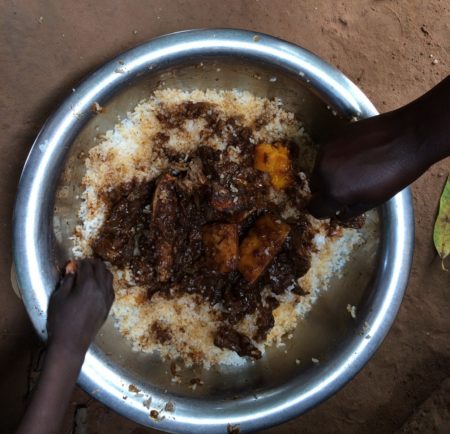
Rice is the staple grain in the central part of The Gambia, and is served for both lunch and dinner. Most Gambians eat out of a communal food bowl using their right hand. I have not mastered that technique, so I still use a spoon.
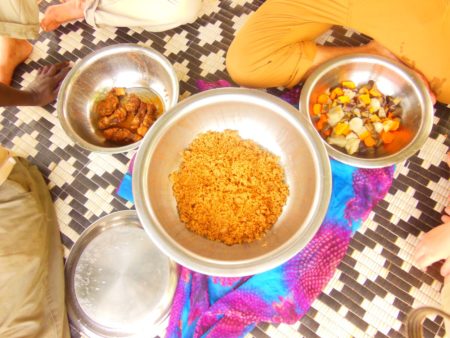
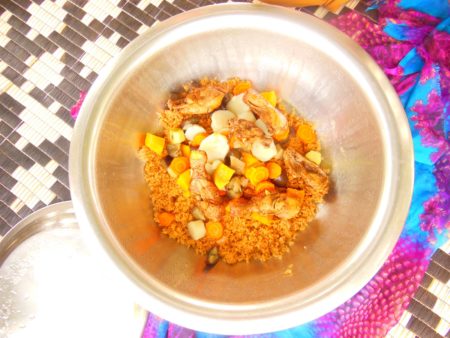
The meals in my training village, were spicy but not too hot for my taste, which helped with the boring menus. Unfortunately, the vegetables were usually overcooked, and an overabundance of oil was used when preparing meals.
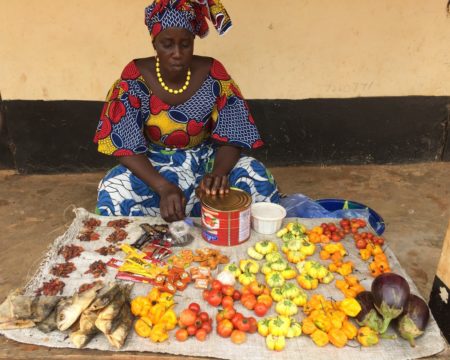
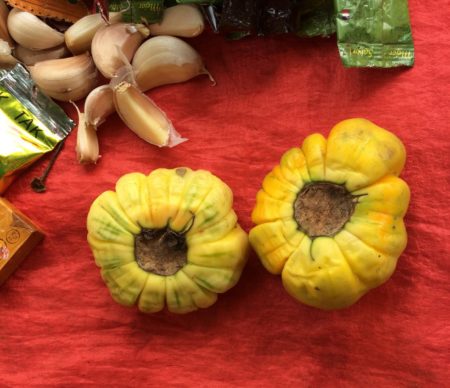
At lot of women sold food from their home compounds, spending the day waiting for customers and visiting with friends. Some of the vegetables were grown in their gardens, and they would also have additional items available that where commonly used for cooking, but had been purchased in town.
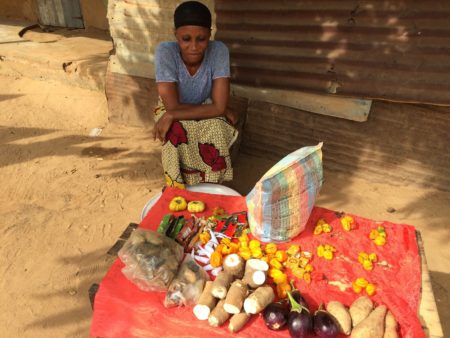
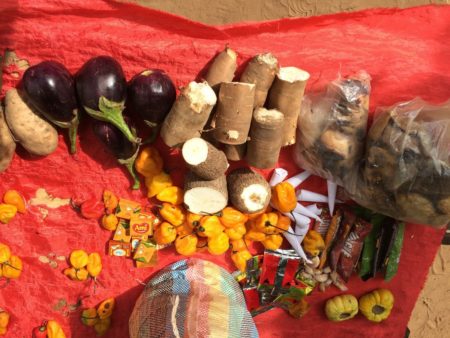
We had eggplant, bitter tomatoes, squash, potatoes, onions, garlic, sweet potatoes, casaba, okra, carrots and cooked dried beans. It was a treat to get raw carrots, cucumbers, and green bell peppers with our lunch. There was very little fruit served, occasionally watermelon or apples for desert.
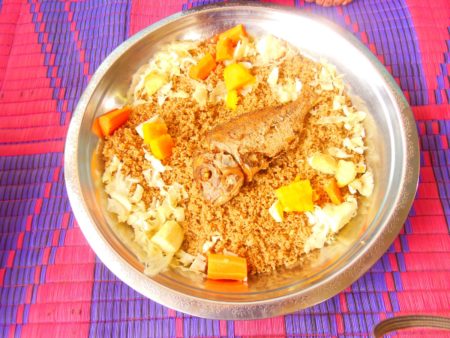
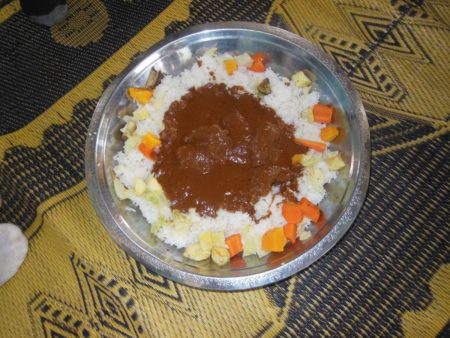
Lunch was the main meal of day, served after mid-day prayers, about 2:30 in the afternoon.
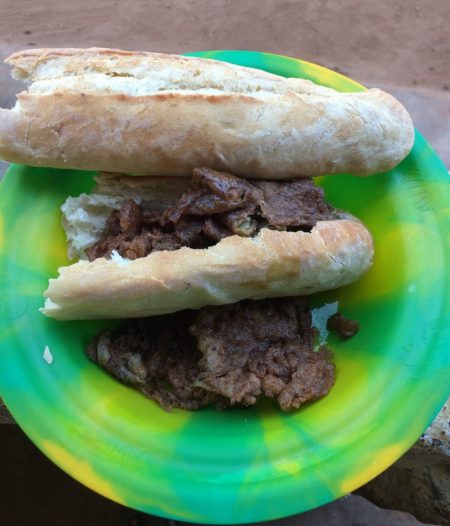
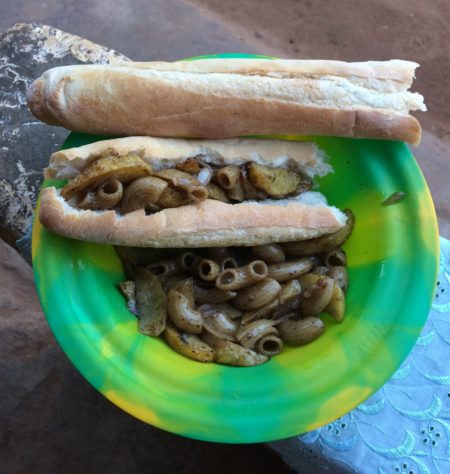
Breakfast was my least favorite meal, usually oily fried eggs with onions, or oily potatoes and pasta, with a soft bread roll.
Dinner was generally what was left over from lunch, with more rice to insure there was enough food in the bowl for everyone. I tried to eat a little of everything I was served, knowing I needed the nutrients. Although, I did lose ten pounds during those two months – not a bad thing. My body really missed having the fiber fresh fruit provided. Whenever I was in town, which wasn’t very often, I would buy as many bananas, oranges, or apples, that I could keep without refrigeration.
During my time in the training village, I was served all of my meals, because there wasn’t any way to cook for myself. I will talk about cooking methods in a future blog post.
5 thoughts on “Food”
Hi Susan –
Thank you for sharing your Peace Corps experience via your blog. It inspires me to join the Peace Corps in the future – I look forward to future post.
Kristie
Were there no fruits grown in the training village? Too water intensive? I hope you have more flexibility with your diet now that you are finished with training.
Love reading about your adventure Susan! Very inspiring 😉
Enjoyed this post! I always love hearing about other people’s diets. Seems like carbohydrates make up a lot of their calories, with a fish, eggs and some beef making up the protein.. are,people healthy or do do they have problems like diabetes or obesity? So interesting.
Also ,I really liked the colorful photos you took!
Hi Susan,
I just read all 5 of your blog posts. It was so enjoyable to have some insights into your life in the Gambia. I was a PCV in Thailand in 1966-68 and Megan was in Gabon 1996-98. I visited her there and found West Africa fascinating. Last winter I spent a month with my great nephew who was a PCV in Samoa, helping out in the primary school. So, I am very interested in your experience. Thanks for doing the blog. Happy New Year, Carol
Comments are closed.